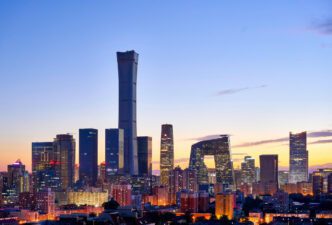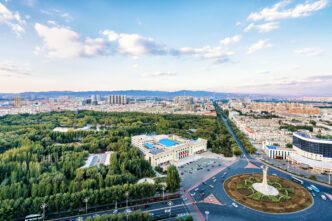Executive Summary
The Story So Far
Why This Matters
Who Thinks What?
Geopolitical momentum appears to be shifting eastward, positioning China for a potentially significant role in reordering global dynamics for the first time since the Cold War. This comes as recent developments, including an American AI company restricting access to Chinese-owned entities, and strategic moves by nations in Africa, Europe, and Asia, highlight a complex interplay of economic and political recalibrations.
Shifting Global Dynamics
The geopolitical landscape is witnessing a notable shift in momentum towards Beijing, a development underscored by recent events such as the Shanghai Cooperation Organisation summit in Tianjin and a military parade in Beijing. This perceived shift occurs amidst a backdrop of increasing technological competition, exemplified by American artificial intelligence company Anthropic barring companies more than 50% owned by Chinese entities from using its services. This move further complicates China’s access to American technology and encourages the global business community to reconsider Chinese investment.
Despite these restrictions, China’s influence is expanding across various regions. In Africa, Kenya is reportedly initiating de-dollarization efforts by converting some of its debt from US dollars to yuan. Simultaneously, Slovakia in Europe is securing Chinese rare earths, diverging from the European Union’s broader strategy to reduce import dependence. In Asia, the Power of Siberia 2 pipeline, after nearly two decades of negotiations, is reportedly progressing, potentially reorienting gas supplies towards China.
Broader Context and Economic Considerations
These individual developments are framed within what some observers describe as “holistic shifts,” including the United States’ approach to China regarding the war in Ukraine and the potential for a reset in China-India relations. This evolving environment suggests that China’s growing influence is no longer solely a response to President Trump’s “America first” trade policies but indicative of a broader transition in the global order.
However, China also faces domestic economic considerations. Its export growth rate has recently slowed to a six-month low, even as it actively redirects trade towards regions like the Association of Southeast Asian Nations (ASEAN), where exports saw a 22.5% year-on-year increase last month, and Africa, where it has accumulated a US$60 billion trade surplus this year. Despite these efforts, emerging markets may not fully compensate for the purchasing power of Western economies.
Looking Ahead
As the world navigates a period “between orders,” China’s strategic moves in trade, technology, and international relations suggest a growing ambition to shape the global landscape. The coming years will reveal how Beijing leverages this momentum to address both its own development needs and its role in a rewired world.








